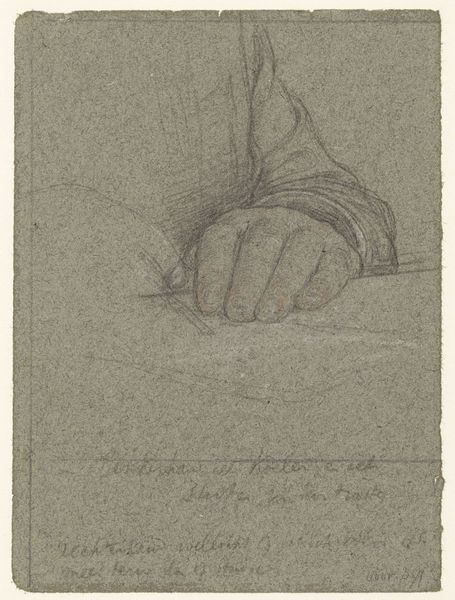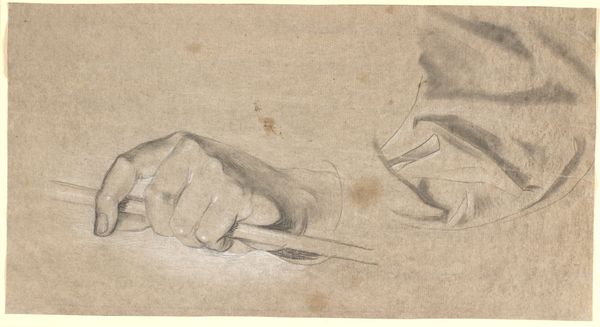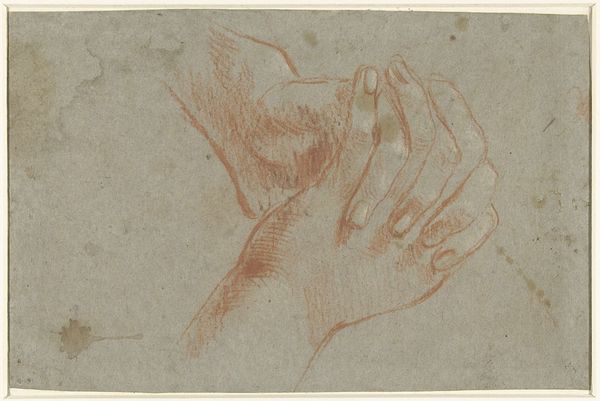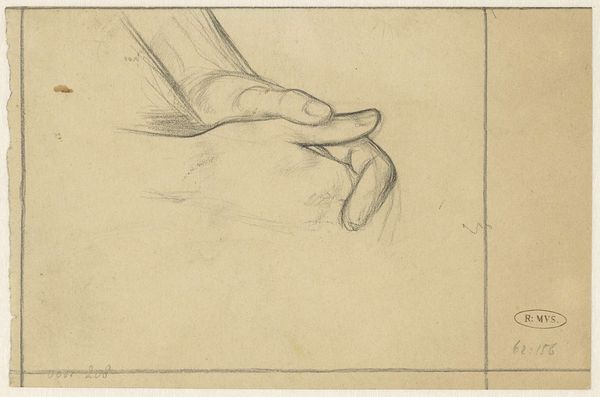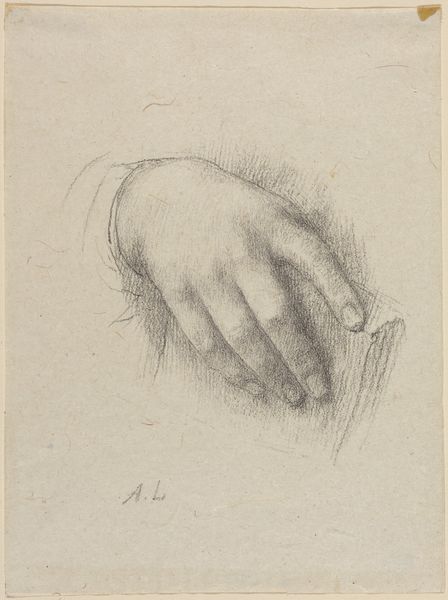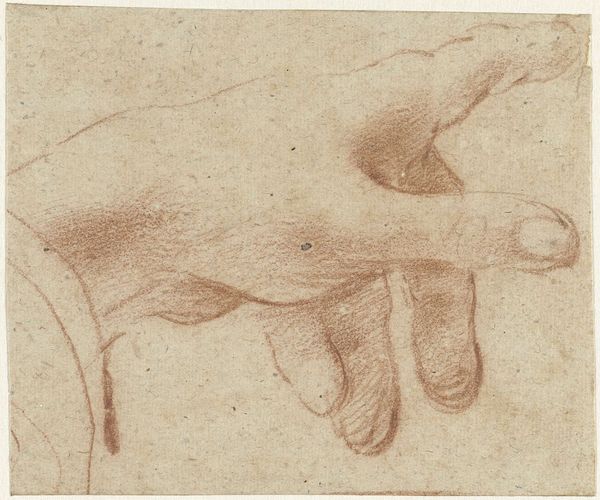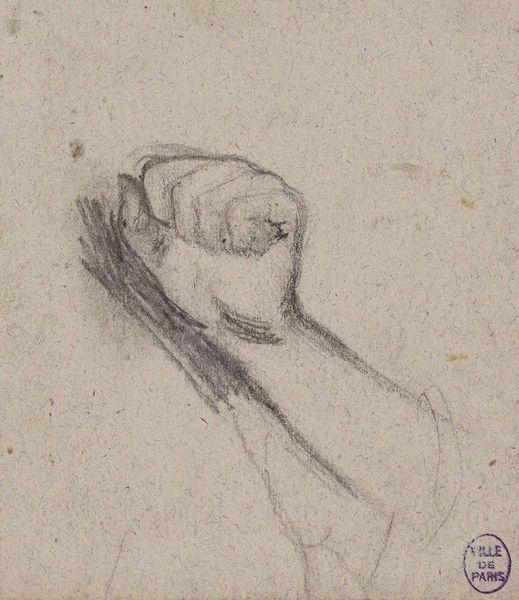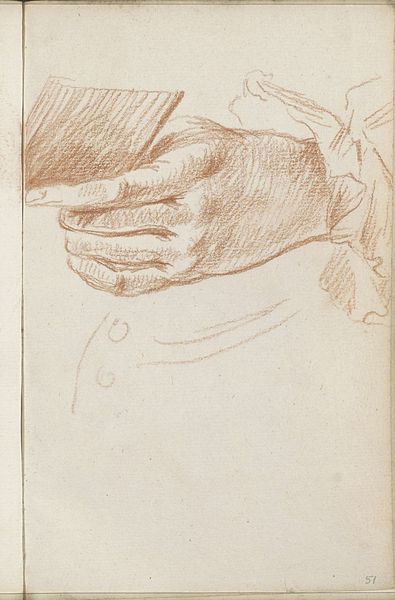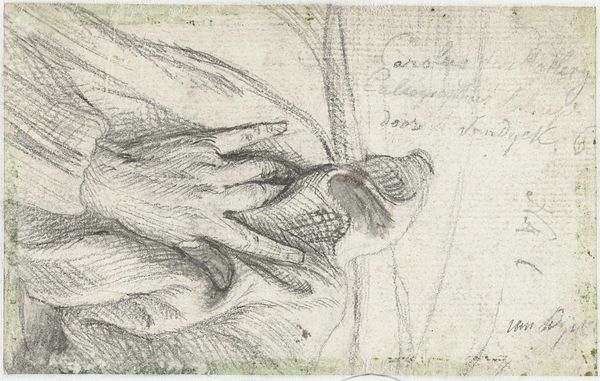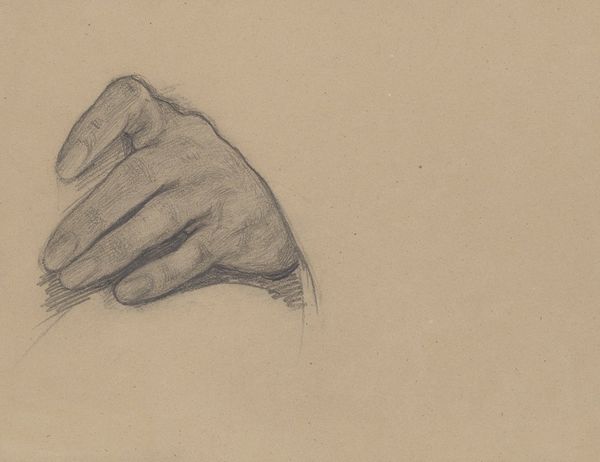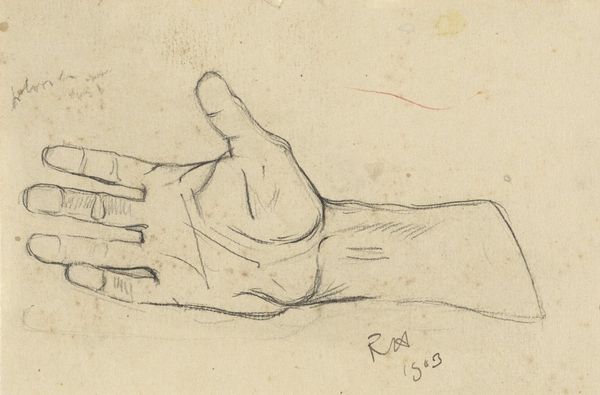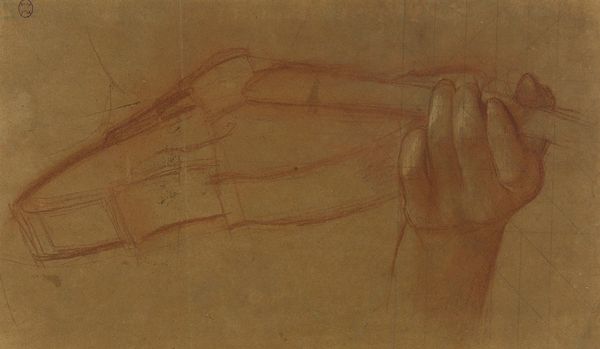
drawing, pencil, graphite
#
portrait
#
pencil drawn
#
drawing
#
pencil sketch
#
charcoal drawing
#
pencil drawing
#
pencil
#
graphite
#
pencil work
#
academic-art
#
realism
Dimensions: height 148 mm, width 111 mm
Copyright: Rijks Museum: Open Domain
Curator: Here we have a work titled "Studie van de hand van Geheimrat M. Kempner," or "Study of the Hand of Geheimrat M. Kempner," attributed to Jan Veth, dating from 1874 to 1925, currently held in the Rijksmuseum. Editor: The first thing that strikes me is the deliberate imperfection, almost unfinished quality. The hand, caught in the act of holding a quill, looks remarkably ordinary, weighted down by a wedding band. Curator: Well, the piece is rendered in graphite and pencil, which emphasizes its status as a study, not a finished declaration. But who was Kempner, and what positionality did he occupy to have his hand specifically depicted? How did this portrayal engage with broader narratives of labor, power, and status during that period? Editor: Precisely. I see a direct relationship between the hand, the tool, and the surface on which it's working. The graphite, derived from the earth, becomes the instrument through which labor and intellectual capital are expressed. How was graphite sourced then, and who were the unseen laborers extracting it, and transforming it into an artistic tool? Curator: An interesting intersection of materiality and the construction of professional identity. There's a very distinct class element—the ownership and utilization of knowledge are literally in his hands. Editor: This work makes me consider artistic intention as another form of labor. How much energy did Jan Veth invest in observing and translating this single hand into a composition and how does it reveal aspects of academic style rooted in realism? Curator: Veth's ability to distill the essence of his sitter to a singular detail—it’s fascinating, if one thinks of art as another cog within a societal system which ultimately reinforced prevailing social stratifications. Editor: I leave pondering the socio-economic structures embedded in simple materials and gestures—the unseen histories that form our present moment. Curator: A study of a hand holding a quill then holds more than a depiction, perhaps something akin to labor manifested? Thank you.
Comments
No comments
Be the first to comment and join the conversation on the ultimate creative platform.
